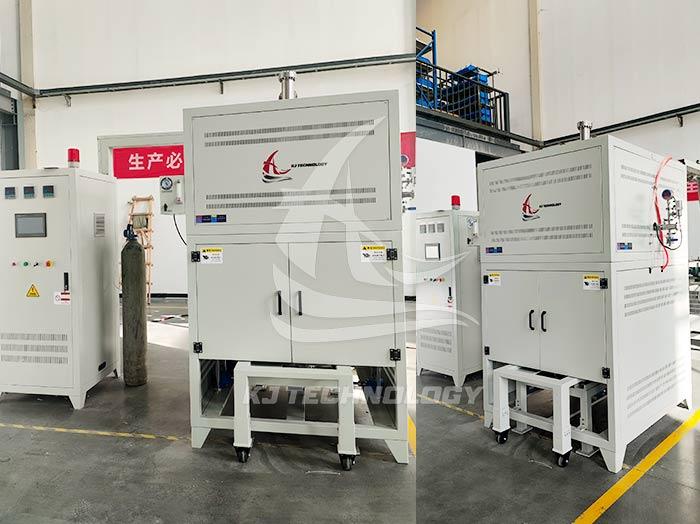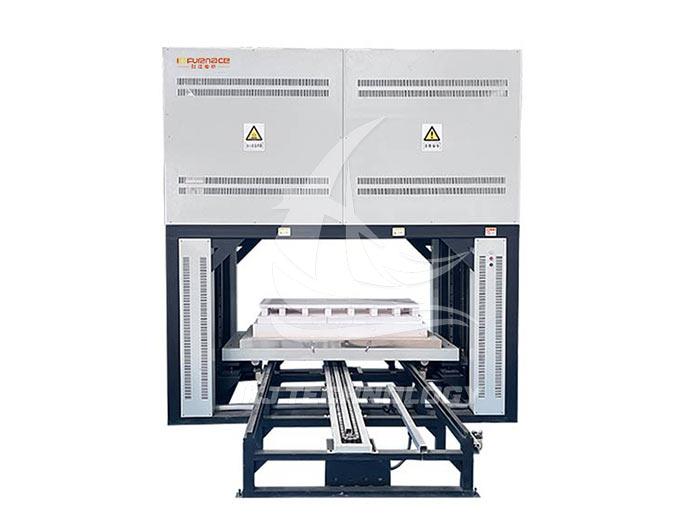What are the applications of electric heating vacuum brazing furnaces?
 09-24-2025 Author: KJ technology
09-24-2025 Author: KJ technology
The electric heating vacuum brazing furnace, with its high vacuum environment, precise temperature control, and wide material adaptability, achieves high-quality welding and heat treatment in multiple fields. Its core application areas and advantages are as follows:
1. Aerospace field: key equipment for manufacturing core components
Application scenarios: Manufacturing key components such as aircraft engine blades, turbine disks, honeycomb structure wall panels, and spacecraft thermal protection systems.
Technical advantages:
High strength welding: Vacuum environment avoids high-temperature oxidation, resulting in higher welding strength (such as welding of aircraft engine blades), far exceeding traditional processes.
Complex structure welding: It can achieve multiple brazing seams and simultaneous welding of multiple components, such as honeycomb structure with higher micro hole filling rate, meeting the requirements of lightweight and high strength.
Material adaptability: Suitable for difficult to weld materials such as titanium alloys and nickel based high-temperature alloys, solving the welding problems of hot end components in aircraft engines.
Typical case: Hangzhou Oxygen Generator Factory manufactured turbine oxygen compressor impellers through vacuum brazing technology. At a speed of 18060r/min, only one brazing seam was found to be detached, and the overall structure was intact, significantly improving manufacturing accuracy and reliability.
2. In the field of automobile manufacturing: the core support for lightweighting and high efficiency
Application scenarios: Production of high-performance engine components, transmissions, radiators, EGR (Exhaust Gas Recirculation) heat exchangers, oil coolers, etc.
Technical advantages:
Lightweight design: Aluminum radiators are lighter in weight than copper and have better heat exchange performance. A certain automobile company has a high proportion of aluminum radiators, saving over ten million yuan in annual costs.
Efficient welding: The air tightness qualification rate of vacuum brazed radiators is improved, and the heat transfer efficiency meets the standards of the Ministry of Machinery Industry.
Heterogeneous material connection: realizing composite welding of stainless steel and graphite, reducing the contact resistance of bipolar plates, and improving the performance of new energy batteries.
Typical case: The CF series alloy developed by a Japanese industrial company is used to manufacture automotive radiator fins through vacuum brazing technology, which improves corrosion resistance and extends service life.
3. Electronic power field: guarantee of high precision and high reliability
Application scenarios: Assembling precision components such as semiconductor chips, electronic packaging, circuit boards, connectors, sensors, etc.
Technical advantages:
Non oxidation welding: eliminate crystal defects in a vacuum environment, reduce the porosity of solder joints to below 5%, and ensure heat dissipation performance.
Welding of small parts: It can achieve precise connection of thin-walled parts below 0.1mm, meeting the demand for miniaturization of electronic components.
Material compatibility: Suitable for welding dissimilar materials such as ceramic metal and glass metal, supporting the development of power electronics technology.
Typical case: A semiconductor company uses vacuum brazing to prepare ceramic coated copper substrates, which improves thermal conductivity, reduces chip operating temperature, and significantly improves reliability.
4. Precision Machinery Field: Core Processes for High Precision and Long Lifespan
Application scenarios: Manufacturing clocks, medical equipment (such as surgical instruments, dental equipment), precision bearings, oil pump and nozzle mechanical parts, etc.
Technical advantages:
Low deformation welding: deformation less than 0.05mm, no need for subsequent corrective processing, meeting high-precision requirements.
Corrosion resistance: The corrosion resistance of welded joints is close to that of the base material, suitable for marine environments or corrosive media.
Complex shape welding: can weld slender parts (aspect ratio>50:1) or multi-channel structures (such as plate fin heat exchangers).
Typical case: A small vacuum brazed drill bit developed by a research institute in Northwest China has an improved service life compared to traditional processes and performs excellently in mining drilling.
5. Energy equipment field: support for high efficiency and high reliability
Application scenarios: Manufacturing air separation equipment, petrochemical equipment, nuclear energy industry components, gas turbine reheaters, etc.
Technical advantages:
Efficient heat transfer: The plate fin heat exchanger increases processing capacity, reduces energy consumption, and improves purity.
High temperature and high pressure resistance: suitable for high-pressure environments, meeting the harsh working conditions of petrochemical equipment.
Long life design: Vacuum brazed joints have a longer lifespan, reducing equipment downtime and maintenance costs.
Typical case: A British company uses a vacuum brazing furnace to produce low-temperature heat exchangers, replacing traditional salt bath brazing, reducing production costs, and improving product lifespan.








